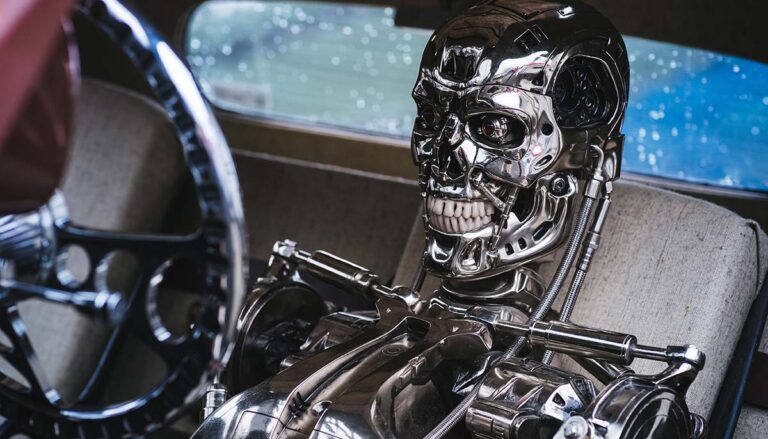Killer robots aren’t a futuristic possibility–they’re here now. They just don’t look the way Hollywood made us expect they might, resembling humans like the Terminators. What we need to fear are much simpler technologies.
How Hollywood shaped our expectations of killer robots
Hollywood has always excelled at giving us imaginative speculations of what the future might be.
In movies such as Stanley Kubrick’s 2001: A Space Odyssey, we got our first taste of artificially intelligent terror in the character of supercomputer H.A.L. 9000. We then met the dangerous, human-like replicants 1982’s Blade Runner. The horror of deadly robots was turned up to 11 in 1984’s The Terminator and 1987’s Robocop, and even further in 1991’s Terminator 2: Judgment Day. We saw sinister artificial intelligence in more recent films such as 2014’s Ex Machina.
However, in reality, almost all of these movies have gotten it wrong.
Even more recently, movies featuring armed drones, such as 2015’s Eye in the Sky and 2019’s Angel Has Fallen, offer a much more accurate picture of killer robots now and in the future.
In reality, the killer robots currently in use today are far simpler but no less deadly. And that may be the most frightening concept of all.
Killer robots are already here
Modern warfare is being transformed by autonomous military hardware such as drones, tanks, ships, and submarines. Turkey is already emerging as a major drone power, many of which have some autonomous capabilities. Russia, Ukraine, China, Israel, South Korea, Australia, the United Kingdom, and the United States are all developing and deploying such weapons.
Use outpacing safeguards
What frightens people the most is how autonomous machines might only see living people as another piece of code, processing facial recognition and other data to make decisions such as selecting their own targets.
Organizations working to protect humanity from the machines, such as Human Rights Watch and Stop Killer Robots, are concerned the technology is being rushed into use and outpacing considerations, safeguards, and international humanitarian law standards.
Police departments want killer robots, too
It’s not only militaries around the globe using robots to fight their battles. The Oakland Police Department in California wanted to put together a squad of shotgun-armed robots they could use under certain emergency circumstances. Even though the discussion is shelved for now, Oakland cops are reportedly still pursuing the idea.
Over-the-counter killer robots: Making the world a more dangerous place
What in some ways is most frightening and concerning is that some of the autonomous, artificially intelligent pieces of gear militaries are using to fight battles are only slightly more sophisticated than what you can pick up at your local hobby store, science alert reports. One can easily imagine that homegrown terrorists use over-the-counter devices and lethal ways. Those who intend harm could also modify these relatively cheap drones to increase their lethality.
Debates over ethics, morality, responsibility, and legalities
Artificially intelligent and autonomous weapons stir up a whole host of ethical, moral, technical, and legal concerns.
For example, who ultimately must bear responsibility for autonomous, unaccountable machines that can decide who lives or dies? Those operating the machine? Its host nation? The manufacturer?
To that end, manufacturers are starting to push back. Last week, six leading manufacturers of robotics made a pledge they would never weaponize their robot platforms, including Boston Dynamics.
Five years ago, Elon Musk and over 100 other founders of AI and robot companies signed an open letter calling on the United Nations to regulate the use of killer robots.





